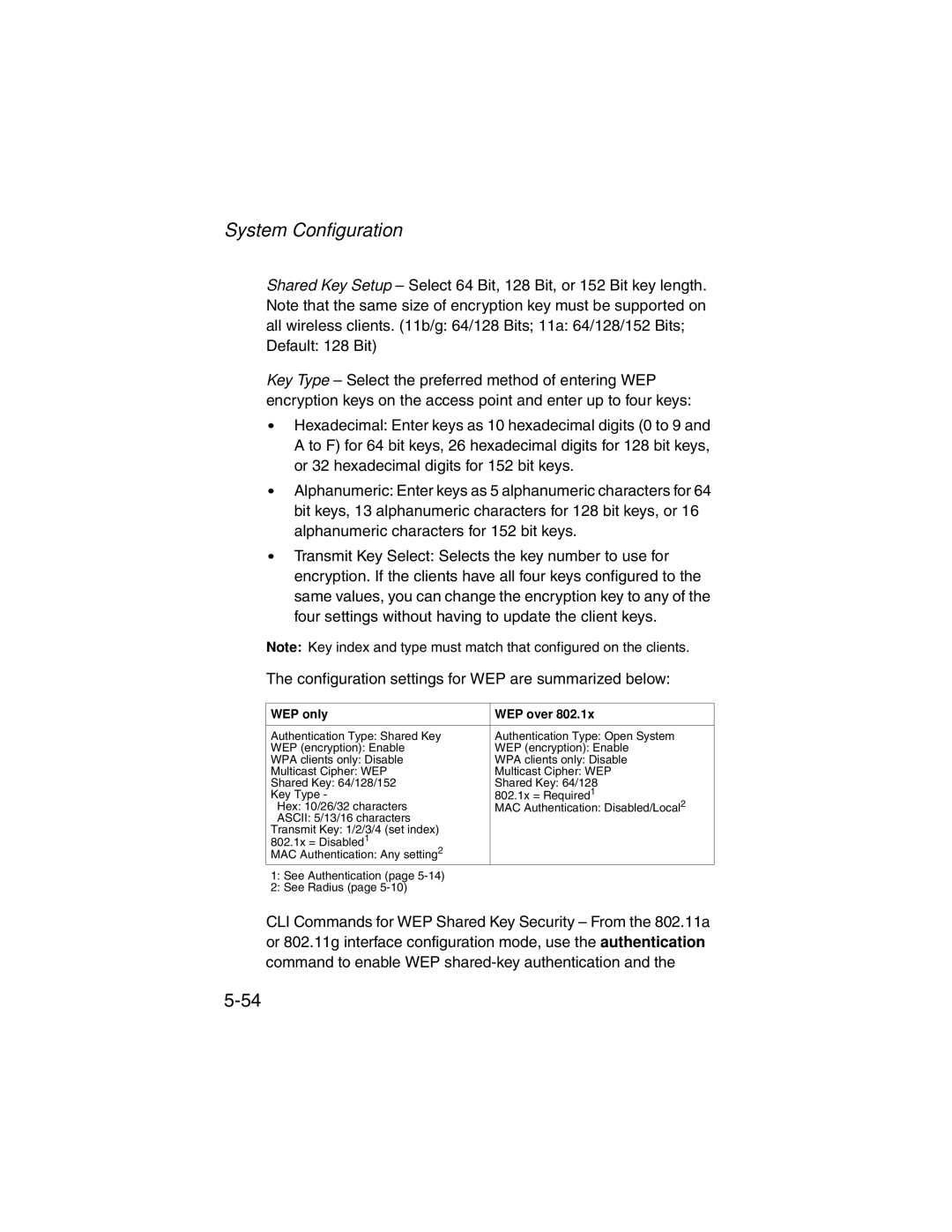System Configuration
Shared Key Setup – Select 64 Bit, 128 Bit, or 152 Bit key length. Note that the same size of encryption key must be supported on all wireless clients. (11b/g: 64/128 Bits; 11a: 64/128/152 Bits; Default: 128 Bit)
Key Type – Select the preferred method of entering WEP encryption keys on the access point and enter up to four keys:
•Hexadecimal: Enter keys as 10 hexadecimal digits (0 to 9 and A to F) for 64 bit keys, 26 hexadecimal digits for 128 bit keys, or 32 hexadecimal digits for 152 bit keys.
•Alphanumeric: Enter keys as 5 alphanumeric characters for 64 bit keys, 13 alphanumeric characters for 128 bit keys, or 16 alphanumeric characters for 152 bit keys.
•Transmit Key Select: Selects the key number to use for encryption. If the clients have all four keys configured to the same values, you can change the encryption key to any of the four settings without having to update the client keys.
Note: Key index and type must match that configured on the clients.
The configuration settings for WEP are summarized below:
WEP only | WEP over 802.1x |
|
|
Authentication Type: Shared Key | Authentication Type: Open System |
WEP (encryption): Enable | WEP (encryption): Enable |
WPA clients only: Disable | WPA clients only: Disable |
Multicast Cipher: WEP | Multicast Cipher: WEP |
Shared Key: 64/128/152 | Shared Key: 64/128 |
Key Type - | 802.1x = Required1 |
Hex: 10/26/32 characters | MAC Authentication: Disabled/Local2 |
ASCII: 5/13/16 characters |
|
Transmit Key: 1/2/3/4 (set index) |
|
802.1x = Disabled1 |
|
MAC Authentication: Any setting2 |
|
1:See Authentication (page
2:See Radius (page
CLI Commands for WEP Shared Key Security – From the 802.11a or 802.11g interface configuration mode, use the authentication command to enable WEP
